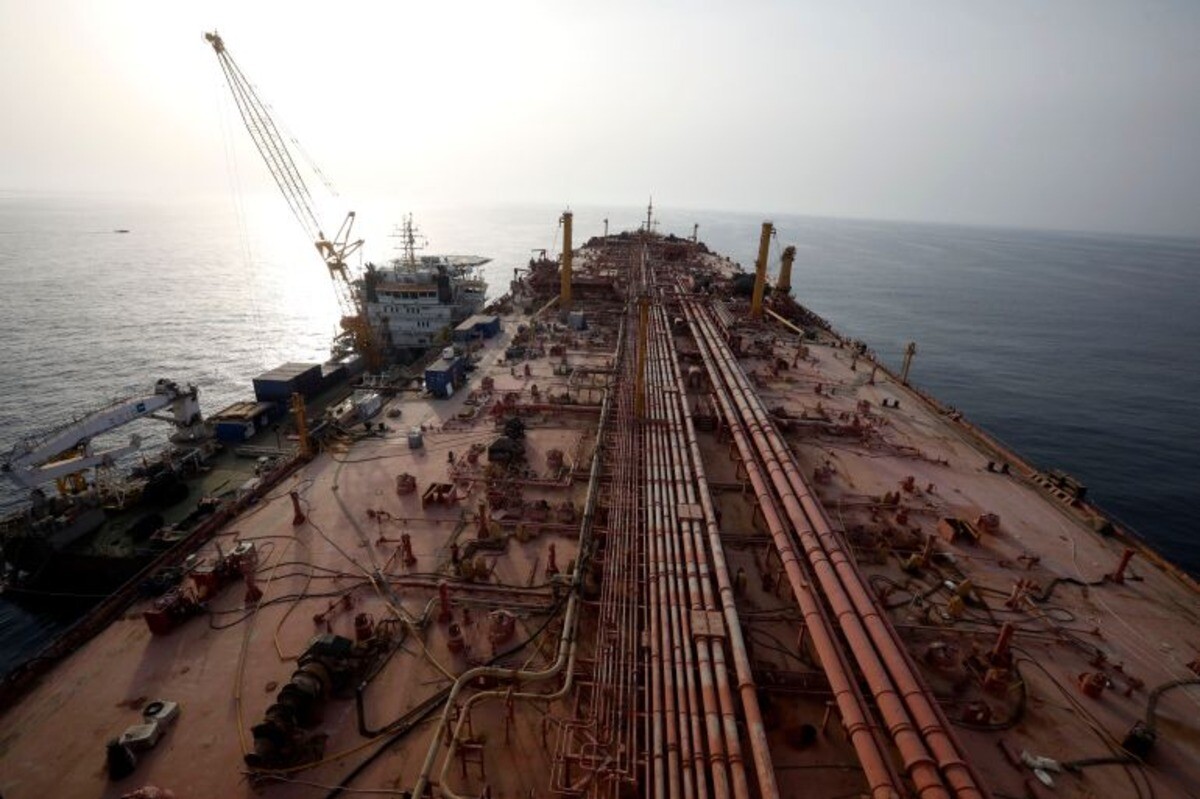The United Nations (U.N.) has initiated the transfer of oil from the FSO Safer. The tanker has been moored off Yemen’s Red Sea coast for years as a floating storage and offloading vessel. The FSO Safer has been at risk of breaking up or exploding due to corrosion and a lack of maintenance. The transfer to a replacement vessel called Yemen is expected to take 19 days.
The United Nations Development Program (UNDP) is responsible for the operation, which is intended to prevent a potential environmental and humanitarian disaster.
U.N. Secretary-General Antonio Guterres called the transfer “the critical next step” in avoiding a catastrophe on a colossal scale.
Read more: The world’s oceans are in dire danger, warns the U.N.
Guterres regards the start of the ship-to-ship transfer of oil as a crucial step in preventing a colossal environmental and humanitarian catastrophe.
First-of-its-kind operation
While the operation to transfer the oil from the FSO Safer to the replacement vessel is the first of its kind, it is also a risky one. However, the potential for the remaining oil in the corroded tanker, which the Yemeni government bought in the 1980s, to leak is even riskier.
For years, observers have expressed concern that the FSO Safer, anchored near the Ras Isa oil terminal, could break apart or explode. Should an oil spill occur, it could potentially devastate one of the largest marine ecosystems in the world.
The U.N. will proceed with the delivery and installation of a catenary anchor leg mooring CALM buoy after the oil transfer. This is an anchored float serving as a navigation mark.

$20 billion
The U.N. has warned that a significant spill could lead to the destruction of coral, mangroves, and other marine life, exposing millions of people to highly polluted air. Fishing communities would be devastated, nearby ports forced to close, and shipping through the Suez Canal disrupted. The cost of the cleanup alone is estimated to be around $20 billion.
Catastrophic spill
The Exxon Valdez oil spill occurred on March 24, 1989. The oil tanker ran aground in Prince William Sound, Alaska, spilling nearly 11 million gallons (41 million liters) of crude oil into the surrounding waters, causing a major environmental disaster.
The spill had a devastating impact on the environment. It killed an estimated 250,000 seabirds, 2,800 sea otters, 300 harbor seals, 250 bald eagles, and up to 22 killer whales. It also destroyed countless other marine animals and plants.
Additionally, the spill caused extensive damage to the local fishing industry and the economy of Alaska.

The human toll of the Exxon Valdez oil spill was relatively low, with only one crew member of the Exxon Valdez dying in the accident. However, many people involved in the cleanup efforts suffered from health problems. These were related to exposure to the oil and the chemicals used to clean it up.
The material losses from the Exxon Valdez oil spill were significant, with the cleanup effort costing over $2 billion. Exxon also paid billions of dollars in fines and compensation. This was to those affected by the spill, including fishermen, Native American communities, and others.
For more environment-related stories, click here.








